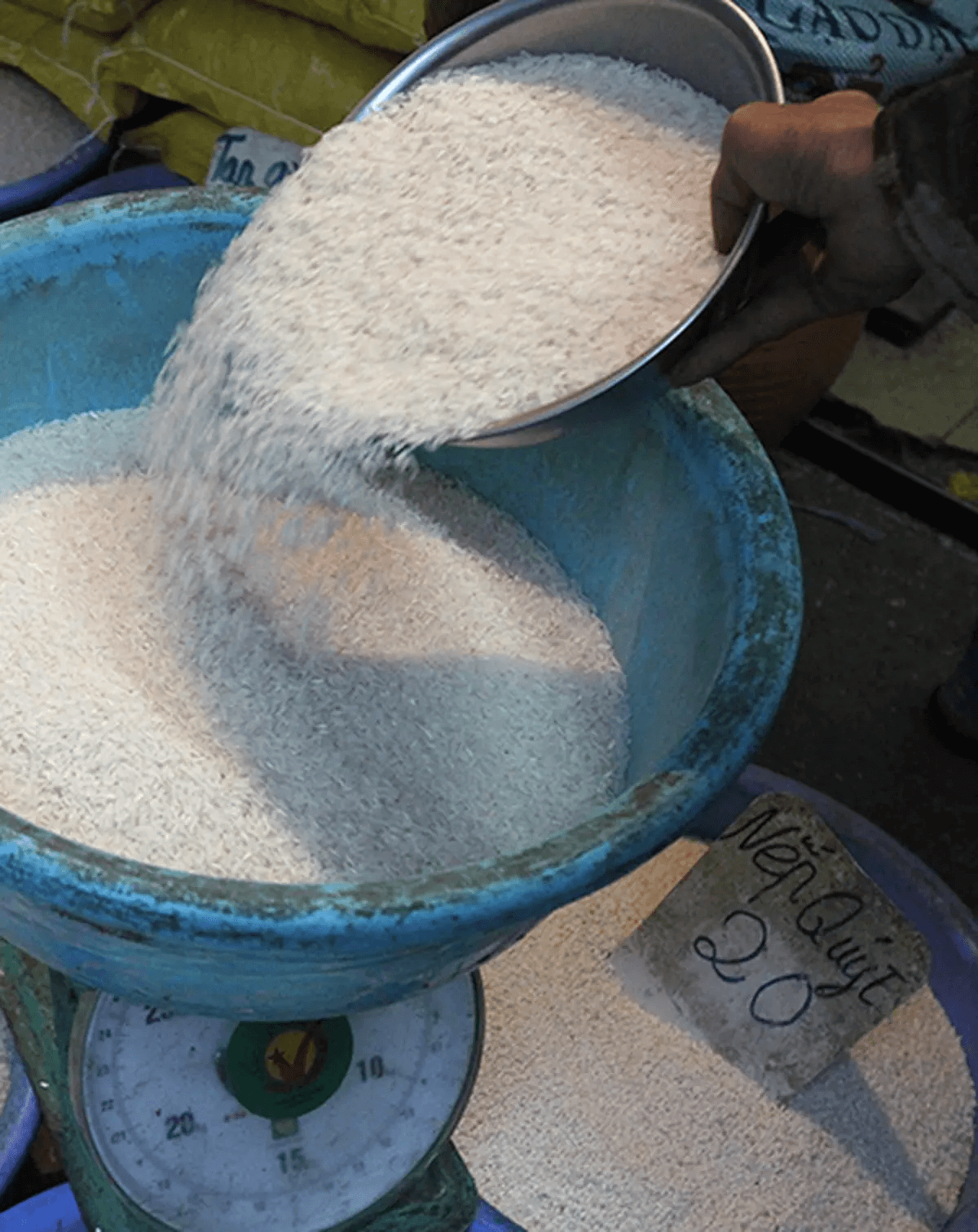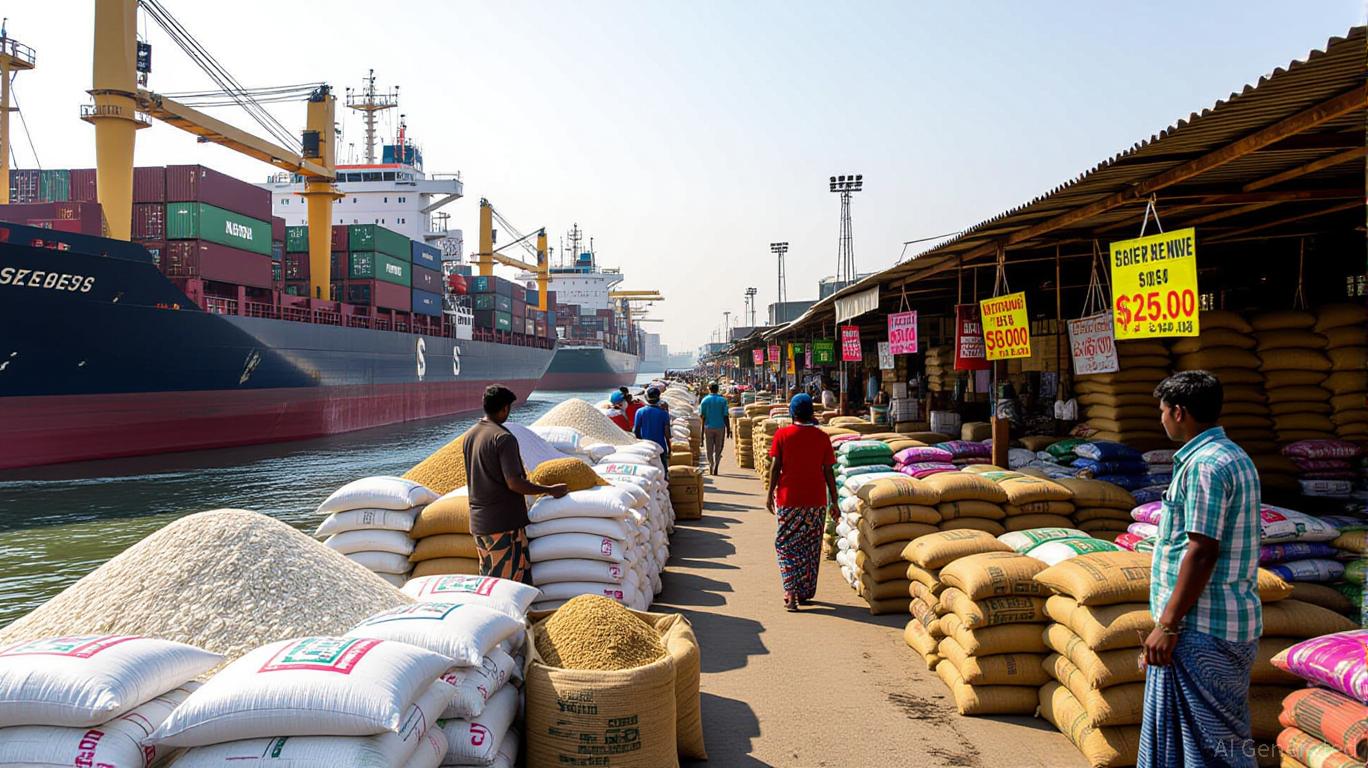Tags
Rice tariff rate cut to ease inflation, boost economic growth
By Anna Leah Gonzales

RICE TARIFF CUT. HSBC Global Research ASEAN Economist Aris Dacanay, in a briefing at Shangri-la at The Fort in Bonifacio Global City on Wednesday (June 5, 2024), says the tariff reduction in rice will help ease inflation. He said the reduced import tariff will also help boost economic growth. (Photo by Leah Gonzales)
MANILA – The tariff rate cut on rice, if implemented timely and successfully, will not only help ease inflation but also boost economic growth, an economist from HSBC Global Research said on Wednesday.
In a briefing at the Shangri-la at The Fort in Bonifacio Global City, HSBC Global Research ASEAN economist Aris Dacanay said reducing the rice tariff to 15 percent from the current 35 percent until 2028 will help unleash 2 percent of household income, which in turn will support household consumption and boost overall growth.
Dacanay said that under a best-case scenario, the tariff rate cut has the potential to boost growth by a maximum of 1.4 percentage points (ppt).
“Consumption is 70% of GDP (gross domestic product). So that’s basically your household budget. That’s how much people spend. People spend 10% of their budgets on rice. If you reduce rice prices by 20%, you’re basically saving 2% of your household budget,” he said.
“So let’s say if all the unleashed basically household savings or freed up household savings goes to buy goods that are domestically produced and all of them, basically all of them are spent, nothing is saved, then the potential, the highest, the maximum growth it could deliver is 1.4 ppt,” Dacanay added.
For this year, HSBC Global Research expects economic growth to hit 5.8 percent and is seen to further accelerate to 6.1 percent in 2025.
Dacanay, however, explained that the forecast does not include the impact of the tariff rate cut.
“There’s no tariff rate cut yet. It [economic growth] could be higher. There’s an upside risk,” he said.
For inflation, HSBC Global Research expects that the tariff rate cut once fully implemented could help ease inflation by 1.8 ppt.
Dacanay said that based on their current projection which does not take into account the impact of the tariff rate cut, headline inflation will likely range between 4 and 4.5 percent until July this year and will return within target by August.
For the full year 2024, inflation is projected to settle at 3.6 percent and will slightly go up to 3.8 percent in 2025.
“But, let’s say, the rice tariff rate cut happens tomorrow or happens within June, I do think that’s a big downside risk to the inflation outlook, and perhaps inflation will not breach the target,” said Dacanay.
“If the policy transmission of the tariff rate cut is really fast, it was very fast during 2019 when the tariff rate cut happened. If we apply the same logic, then that’s a big downside risk to the inflation outlook,” he added.
HSBC Global Research believes that if the new tariff schedule is implemented within the next month, inflation could quickly go down and touch the 2.0-percent level and could even go lower if global oil prices ease at the same time.
Dacanay said that with the big reduction in inflation, the Bangko Sentral ng Pilipinas will have an opportunity to cut interest rates faster than the Fed. (PNA)
https://www.pna.gov.ph/articles/1226303Published Date: June 5, 2024






